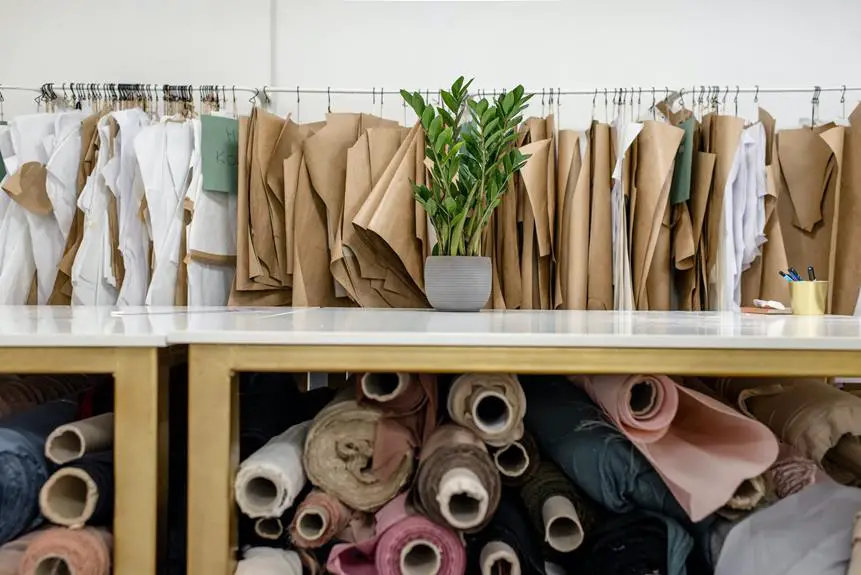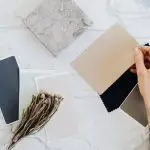Looking to attach patches without the hassle of sewing? You're in luck! This guide will walk you through five effective methods for securing patches to your garments, bags, and accessories without ever picking up a needle and thread.
From iron-on patches for a quick and easy solution to fabric glue, velcro, badge holders, and adhesive backing, you'll have a range of options at your fingertips.
Whether you're a seasoned patch collector or just starting out, these no-sew techniques will give you the mastery you need to personalize your items with ease.
So, let's dive into these simple yet effective methods and elevate your patch game in no time.
Key Takeaways
- Iron-On Methods: Preheat iron, cover patch and fabric with cloth, apply firm pressure, allow fabric to cool
- Fabric Glue Method: Apply thin layer of fabric glue to patch, press firmly onto fabric, allow glue to dry completely
- Velcro Method: Adhere Velcro to patch and desired surface, ensure secure fastening, perfect for custom designs and easy removal
- Badge Holder Method: Use safety pins to attach patch to badge holder, affix holder to desired item, practical and stylish solution
Iron-On Patches
To attach iron-on patches, simply place the patch on the fabric in the desired location and apply heat with an iron. This method is ideal for custom designs as it allows you to personalize your clothing or accessories with ease.
Start by preheating the iron to the appropriate setting for the fabric you're working with. Once the iron is ready, position the patch on the fabric, ensuring it's centered and aligned as desired.
Next, cover the patch and surrounding fabric with a thin cloth to protect it from direct contact with the iron. Apply firm pressure and hold the iron in place for about 15-20 seconds. Be sure to focus on the edges of the patch to ensure a secure attachment.
After heat application, allow the fabric to cool before checking the patch for adhesion. If the patch isn't fully attached, repeat the heating process.
Remember, when working with delicate fabrics, adjust the heat setting accordingly to prevent damage.
With this simple heat application method, you can effortlessly customize your belongings with unique, personalized iron-on patches.
Fabric Glue
When attaching patches without sewing, another effective method is to use fabric glue, which provides a quick and simple alternative to iron-on patches. Fabric glue alternatives are perfect for no-sew patch attachment, especially when dealing with delicate fabrics or items that can't withstand heat.
Fabric glue is designed to create a strong, durable bond between the patch and the fabric, ensuring that the patch stays securely in place. To use fabric glue for patch attachment, start by placing the patch in the desired position on the fabric. Then, apply a thin, even layer of fabric glue to the back of the patch. Press the patch firmly onto the fabric and allow the glue to dry completely according to the manufacturer's instructions.
Fabric glues come in various formulas, so it's important to choose one that's suitable for the specific materials you're working with. When using fabric glue, always follow the safety and usage instructions provided to ensure the best results for your no-sew patch attachment needs.
Velcro
Attach patches without sewing by using Velcro, a versatile and reusable fastening solution. Velcro is a great option for attaching patches, especially if you want the flexibility to switch them out or if you're working with delicate fabrics that can't be sewn on.
To use Velcro for patch attachment, start by adhering one side of the Velcro to the patch and the other side to the desired surface. This method allows for easy removal and reattachment, making it perfect for custom designs or when you want to switch between different patches.
When using Velcro for patch attachment, ensure that both sides of the Velcro are securely fastened to prevent any accidental detachment. This method works well for various types of patches, from embroidered to printed designs. Additionally, Velcro provides a strong hold, ensuring that your patches stay in place until you decide to remove them.
Whether you're customizing a jacket, bag, or any other item, Velcro offers a practical and versatile way to attach patches without the need for sewing.
Badge Holders
For a convenient and durable attachment method that complements your patches' style, consider using badge holders to securely showcase your collection. Badge holders are a versatile option for displaying patches without the need for sewing. They come in various styles, including clips, pins, and adhesive backings, offering flexibility in how you choose to display your patches.
One option for utilizing badge holders is the safety pin attachment. This method allows you to secure your patches to clothing, bags, or other fabric surfaces without the need for sewing. Simply attach the patch to the badge holder using the safety pin, and then affix the holder to your desired item for a secure and stylish display.
Additionally, badge holders also offer sew-on options. If you prefer a more permanent attachment, you can sew the badge holder directly onto your garment or accessory. This provides a sturdy and long-lasting way to showcase your patches without the need for intricate sewing techniques.
Whether you opt for the safety pin attachment or prefer the sew-on options, badge holders provide a practical and stylish solution for displaying your patches without the need for sewing.
Adhesive Backing
Consider using adhesive backing as a convenient and mess-free option to securely attach patches to your desired items without the need for sewing. Adhesive options provide a quick and easy way to affix patches to clothing, bags, and other fabric items. These adhesive backings are specifically designed to create a strong bond between the patch and the fabric, ensuring a durable attachment that withstands regular wear and tear.
When exploring adhesive options for attaching patches, look for products that are specifically formulated for fabric adhesion. These adhesives are often heat-activated, allowing for a secure bond when applied with a hot iron. Additionally, some adhesives offer the flexibility to be repositioned before permanently adhering the patch to the fabric, providing room for adjustment during the application process.
No sew techniques utilizing adhesive backings provide a versatile solution for individuals who want to personalize their belongings without the hassle of needle and thread. With the right adhesive backing, you can achieve professional-looking results while saving time and effort. Whether you're embellishing a jacket, backpack, or any other fabric item, adhesive options offer a practical alternative to traditional sewing methods.
Frequently Asked Questions
Can I Use These Methods on Delicate or Sensitive Fabrics?
You can use these methods on delicate or sensitive fabrics, like satin or silk, but take special precautions. Adhesive options may work well, but always test a small area first and follow the manufacturer's guidelines for best results.
Are These Attachment Methods Permanent or Can the Patches Be Easily Removed?
For temporary attachment, some methods allow easy removal for delicate fabrics. However, for long term durability and secure bonding, alternative options may be more suitable. Consider the fabric type and patch size for the best attachment method.
Will These Methods Work on Curved or Uneven Surfaces?
To attach patches on curved or uneven surfaces, try adhesive methods like fabric glue or iron-on adhesive. These options provide durability and flexibility, allowing the patches to conform to the surface while staying securely attached.
Can I Wash and Dry the Garment With the Patches Attached Using These Methods?
Yes, you can wash and dry the garment with the patches attached using these methods. However, be sure to follow proper garment care instructions to ensure the patches stay in place.
Are There Any Special Considerations or Precautions to Take When Using These Attachment Methods on Different Types of Patches (E.G. Embroidered, Woven, Leather)?
When attaching patches, consider the patch type for best results. Embroidered and woven patches are durable, but leather patches may need extra care. Take precautions with sensitive fabrics to avoid damage when using these methods.
- Tetron Fabric for Marine Applications: Durability and Use Cases - June 18, 2025
- Tetron Fabric for Outdoor Furniture: Weather Resistance and Care - June 18, 2025
- Tetron Fabric for Wall Coverings: Style and Application Tips - June 18, 2025







